electronica is the world’s largest biennial event for electronic components, which is jointly held with SEMICON Europa. The event spans 16 exhibition venues, covering an area of approx. 200,000 m2. The show focuses on applications and products related to automotive LEDs, electronic components, infrared sensing, and medical electronics, encompassing fields such as semiconductor, embedded systems, touchscreens, wireless modules, and other electronic components and modules.
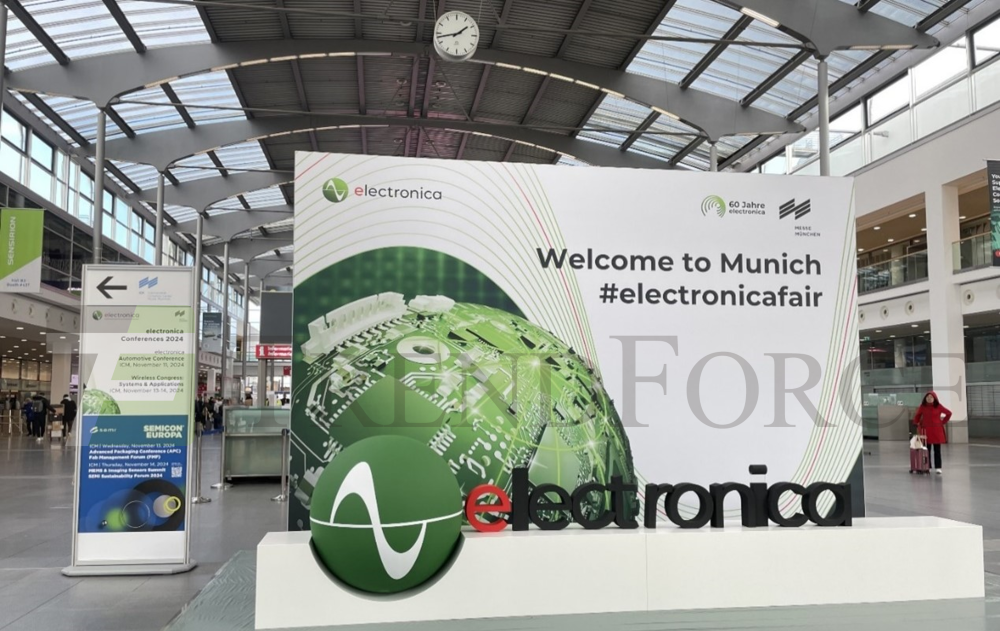
TrendForce is privileged to participate in the world’s most influential and exciting event, and looks forward to LED manufacturers elevating automotive lighting / display and infrared sensing technology to new heights through innovation and creativity.

ams OSRAM
Providing products with consistently high quality, excellent luminous efficacy, and high cost-effectiveness, ams OSRAM has become the top supplier candidate for high-end and new energy vehicles. With the adoption of its new products among automakers, the company has enjoyed stable growth for the automotive LED revenue in 2024. The flagship products presented during the event this year included those for intelligent Micro LED LED ADB headlights (EVIYOS HD 25), Mini LED taillights (ALIYOS), intelligent ambient lights (OSIRE E3731i), a new generation of infrared LEDs with IR:6 chip technology, and a new high-power UV-C LED with 115mW (OSLON UV 3535).
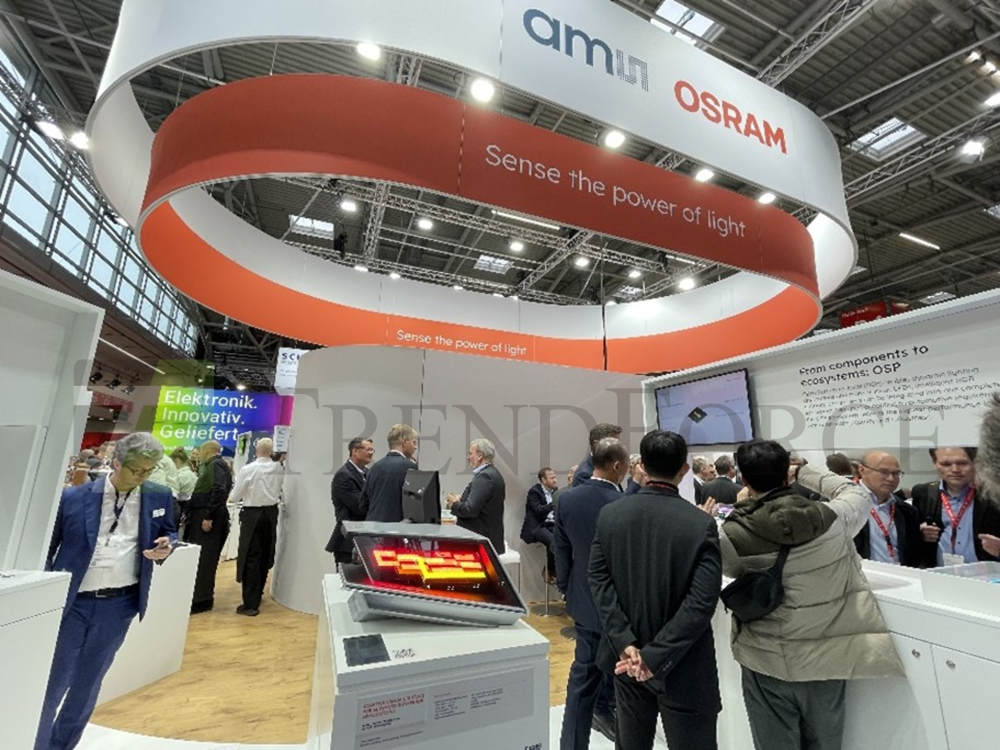
The EVIYOS HD 25 for Micro LED ADB headlights will be adopted by several car manufacturers in 2024. Featuring 25,600 pixels, the headlight can serve as an exterior welcome projector or for functional lighting.

ALIYOS technology enables ams OSRAM to apply Mini LEDs on a thin, flexible and transparent substrate. Connected by almost invisible metal traces, the Mini LEDs can be arranged with a large degree of freedom to form individually addressable segments of any shape. ams OSRAM is working with the world’s leading automotive Tier-1 suppliers and OEMs to explore the new possibilities in automotive interior and exterior lighting.
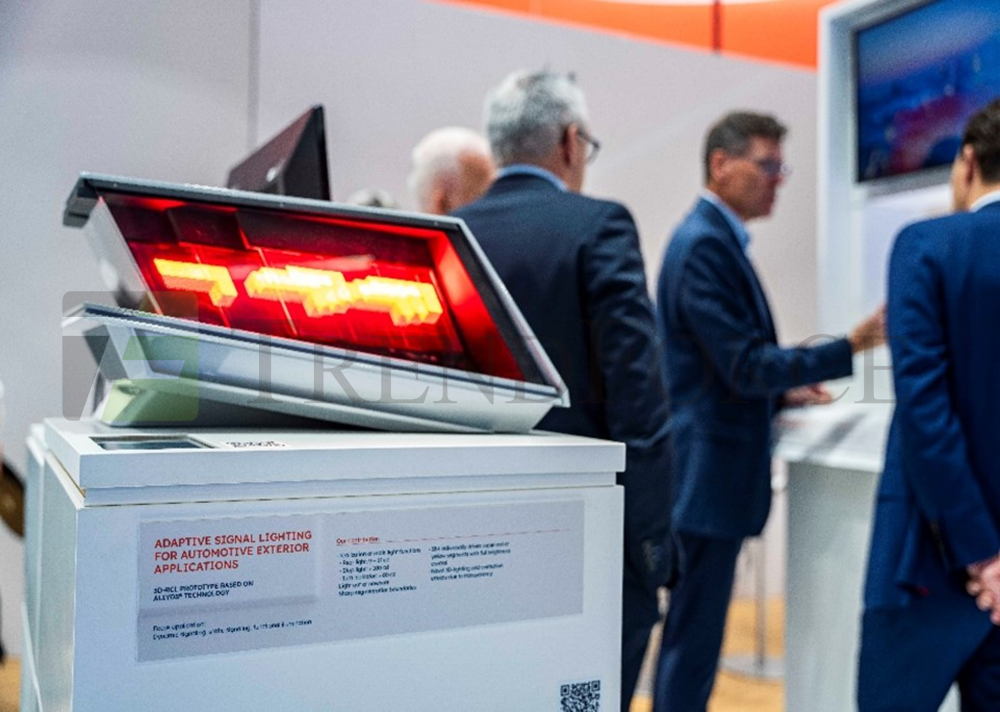
OSIRE E3731i for intelligent ambient lighting offers its Open System Protocol (OSP). The microcontroller sends commands and obtains status updates for each unit of the light to achieve highly precise color calibration and temperature compensation. Currently, the product is installed in the MIX (2024) vehicle model of ZEEKR, and is also likely to be adopted by the US and European car makers.
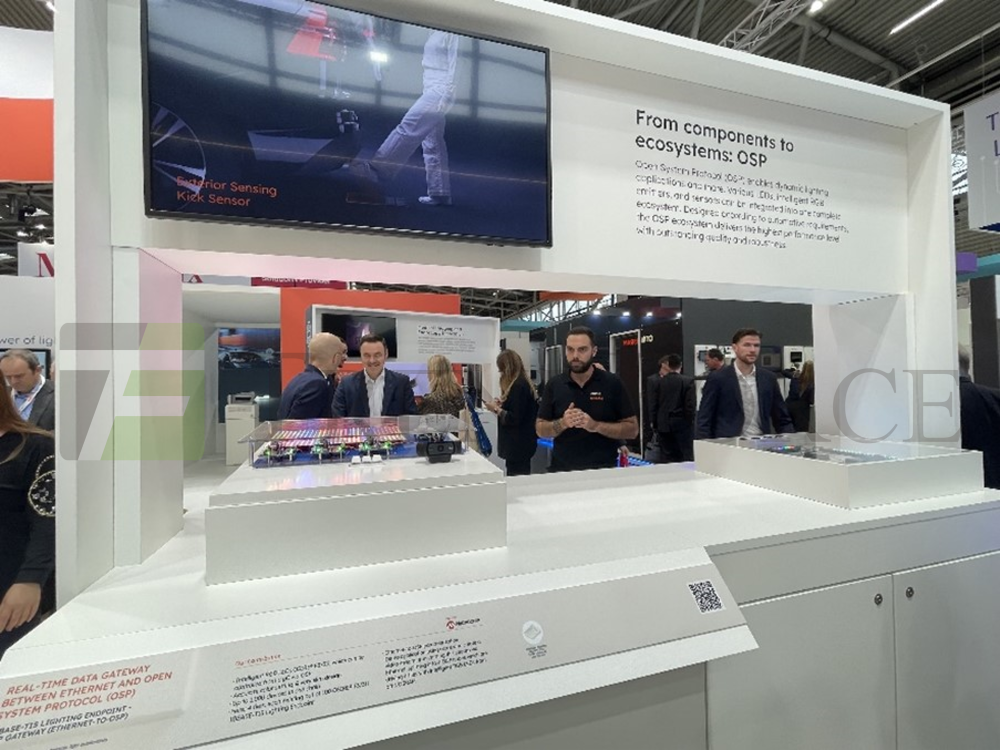
2H24, ams OSRAM announced the latest IR:6 infrared LED chip technology. Compared to the previous chip generation, the IR:6 is boosting up to 35% more brightness and achieving up to 42% increase in efficiency. ams OSRAM adds a 920nm wavelength lighting functionality to this new technology while maintaining the general 850nm and 940nm wavelengths. ams OSRAM has introduced first versions for industrial and consumer applications (security and notebook facial recognition). After being approved by the AEC-Q102 standards, it will be introduced to automotive applications.
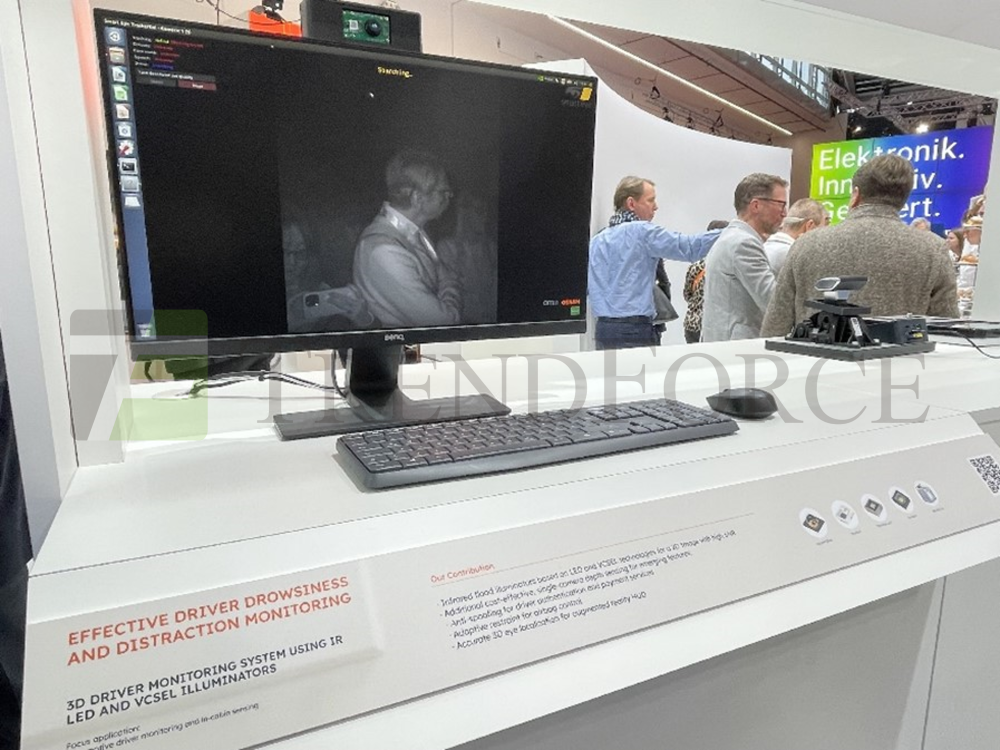
The OSLON UV 3535 aims to meet the rising demand for mercury-free, high-efficiency UV-C treatment and disinfection solutions. With a peak wavelength of 265nm and high optical power of 115mW, the product features a strongly germicidal effectiveness and can kill bacteria comprehensively. According to TrendForce’s surveys, leading water treatment businesses hold that compared to UV lamps, UV LEDs have longer lifespan and simpler optical design. Therefore, when the WPE of UV LEDs reaches ≥10% with prices close to USD 0.1/mW, they are likely to be applied to industrial water treatment. After the optical power and product lifetime of UV-C LEDs reach the level of industrial/commercial use, they could possibly be introduced to the industrial/commercial flowing water sterilization market in 2026-2027.
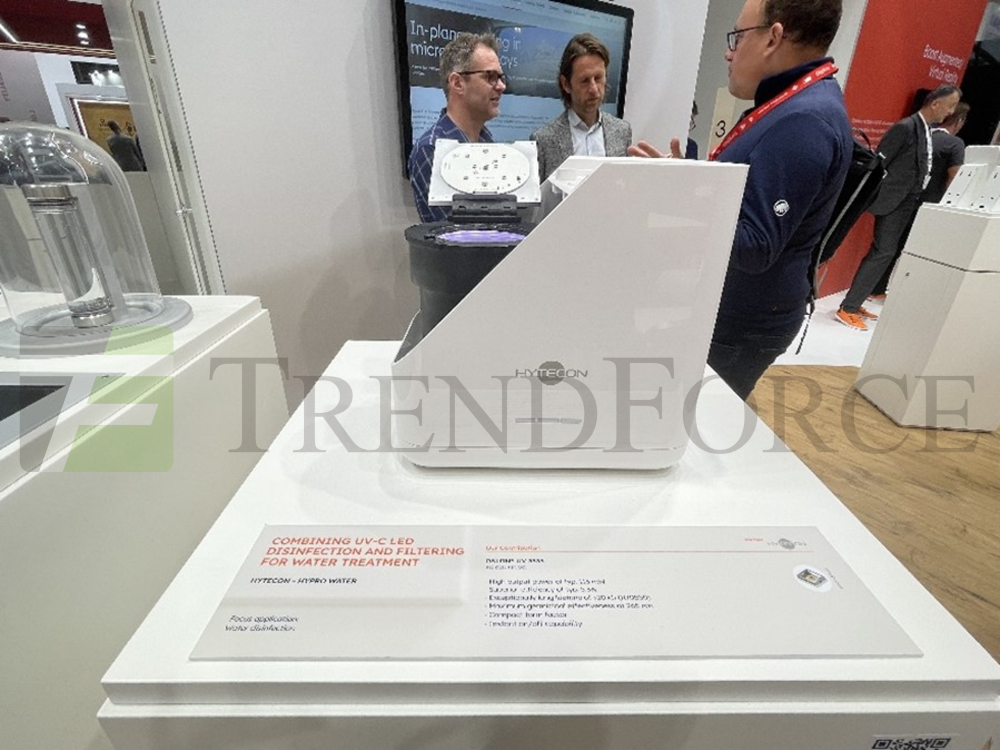
Dominant
Dominant will also launch an OSP-based intelligent ambient light 1.0. Similar to ams OSRAM’s product, Dominant’s 1.0 product allows the microcontroller to send commands to each ambient light and acquire their status updates, thereby achieving highly precise color calibration and temperature compensation. Dominant is planning to release the 2.0 model featuring color calibration and temperature compensation by 2H26.
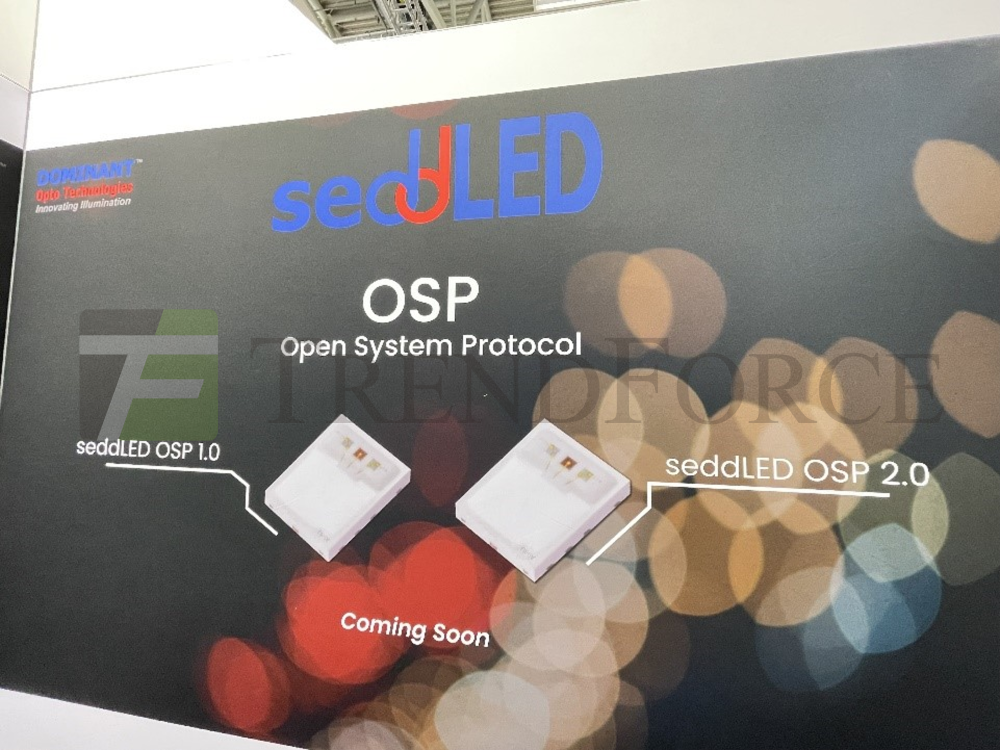
Dominant also values its ISELED Alliance-regulated intelligent ambient lighting products. The seddLED 3.0, 3.4, and 3.5 models have been mass-produced, which are RGB ambient light LEDs. Specifically, the seddLED 3.5 offers a high brightness of 60lm (0.5W) and has been applied to the BMW Mini in 2024. The seddLED 2.0 , a cold and warm white color temperature solution, targets the interior human-centric lighting market. Moreover, the company has launched an iLas-regulated ambient light LED with transceiver functionalities—the seddLED 3.6. This product can serve as a signal bridge between two ambient lighting panels.
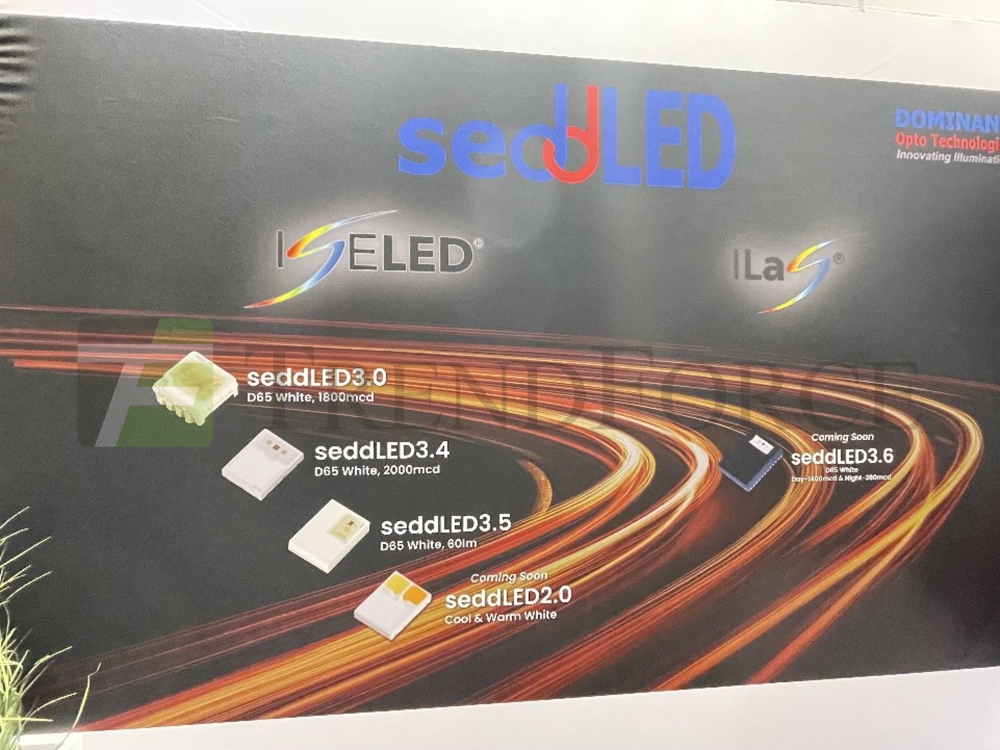
Dominant is actively developing its single-chip headlight LED, the Nagajo 1519. The product is suitable for not only general headlights but also matrix LED ADB headlights. The 2024 model boasts a brightness of 450lm, 1,000mA, 3W), with that of the 2025 model expected to reach 470lm.
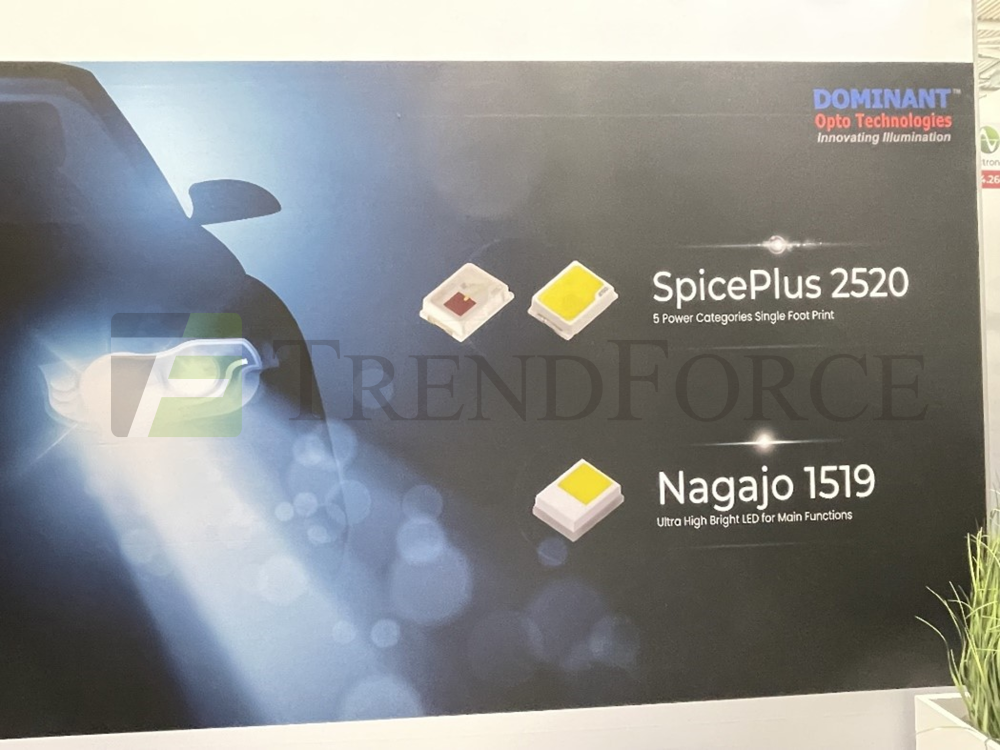
The L-Spice is a lens-equipped red LED for full-width taillight and CHMSL applications. Featuring an asymmetrical beam angle, the product reduces the number of LEDs needed, thereby lowering the overall luminaire system cost. With an adjusted 45° beam angle, the Angle-LED is suitable for luminaries with reflector cups by improving their optical efficiency and reducing their size. To meet HDR display requirements, Dominant offers the Bevel-LED. Featuring the 1515 LED and asymmetrical packaging, the product boasts greater brightness and luminous efficacy. The company is actively sending its samples to Tier 1 suppliers and OEMs.
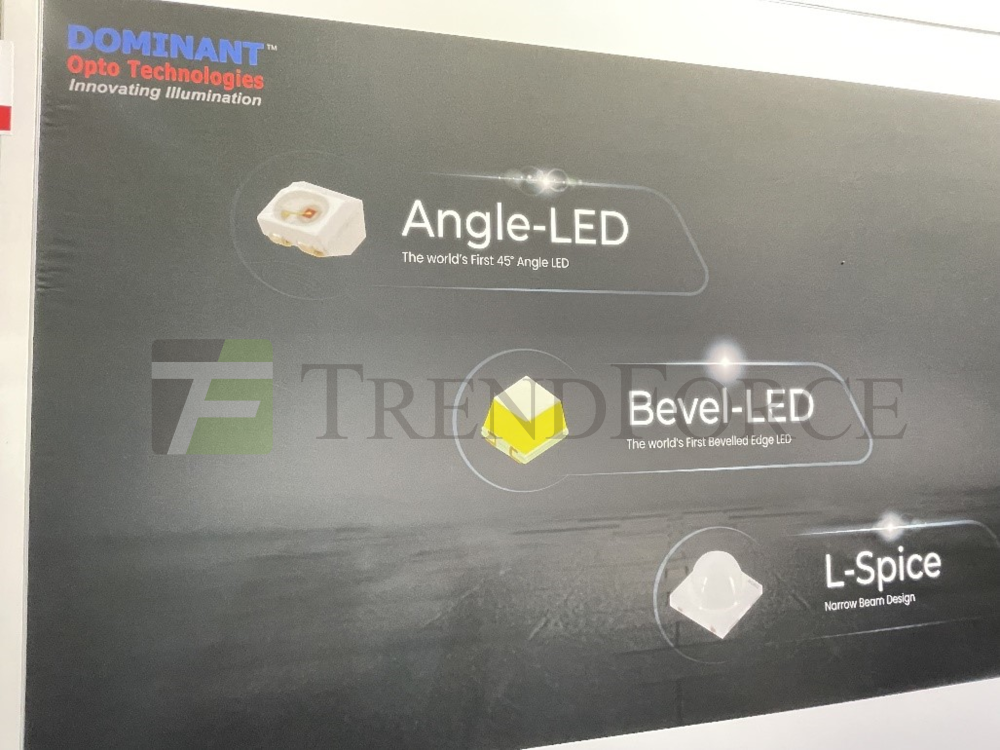
Lextar
Epistar and Lextar, subsidiaries of Ennostar, have managed to supply their 2016 / 3030 LEDs to car manufacturers in the US, Europe, and China. Specifically, the 3030 LED comes with a transparent leadframe and white adhesive on the top, achieving a beam angle of 160°. Additionally, the products are cost-effective, which have attracted significant attention from competitors. To meet its carmaker customers’ need for slim displays, Ennostar has developed and shipped samples of the 1515 LED and 1010 CSP LED.
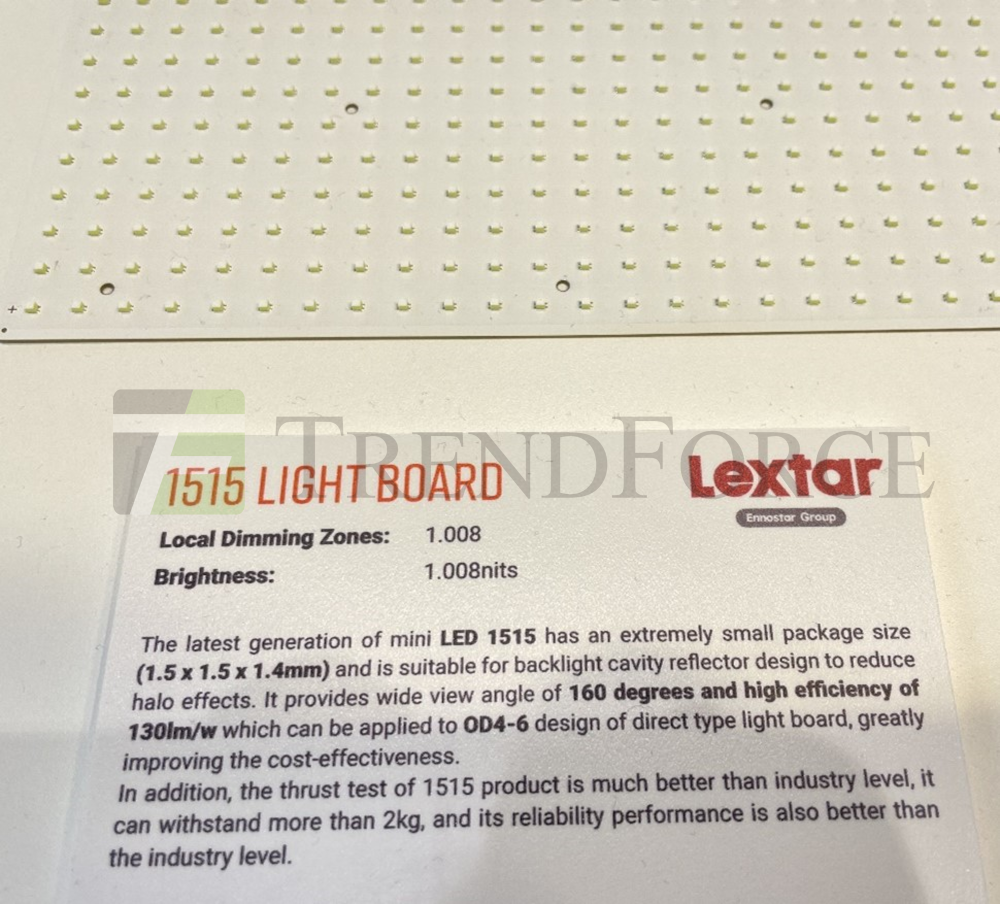
The 1515 LED is applied to displays with an optical distance of 4-6 mm. As for the 1010 CSP LED, the company offers two optical solutions tailored to OEMs and Tier 1 suppliers. One of the solutions combines the white adhesive with the lens, while the other is covered by a full coating. The two products are expected to be installed in vehicle models released in 2026-2027. In response to customer needs, Lextar also offers Driver on Board solutions.
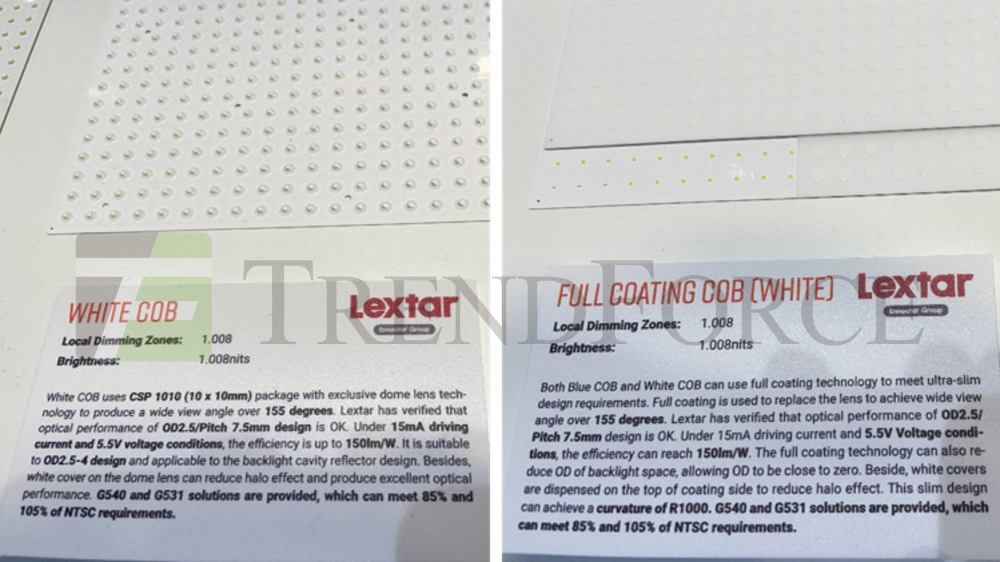
Ennostar has deep expertise in the automotive sector. In August, its subsidiary Lextar established a memorandum of understanding (MOU) with Inova Semiconductors, a prominent automotive IC supplier based in Germany. This was followed by the formal signing of a license agreement during the electronica event held in Munich on November 13. Centering on T. E.M.O. (Thermal, Electrical, Mechanical, Optical) vertical integration, Lextar specializes in the development of cutting-edge module technologies and markets, and is one of the leading brands in the automotive ambient light market. The Lextar–Inova collaboration aims to harness Ennostar’s extensive supply chain capabilities and Inova Semiconductors’ advanced technology to develop next-gen automotive interactive light sources. It will pioneer the extension of Smart LEDs from interior to exterior applications while reducing the package size by 50%, thereby addressing the growing demand for intelligent automotive products.
The core advantages of the Smart LED technology include its pioneering dual application, high brightness (20-40lm), and unique heat dissipation design that improves display effects and product durability. At constant brightness, the Smart LED has 55% lower thermal resistance compared to conventional components, ensuring product safety for car makers and contributing to a longer product lifespan. The technology also features temperature detection to achieve 100% consistent color display performance under different temperatures. Lextar has increased the refresh rate to 1,200Hz, creating a gentler effect on human eyes. Ennostar will establish a long-term partnership with Inova Semiconductors, and roll out the next-gen Smart LED products by 1Q26. The company is also planning to co-develop vehicle models with OEMs and major customers, aiming to further enhance driving experiences.
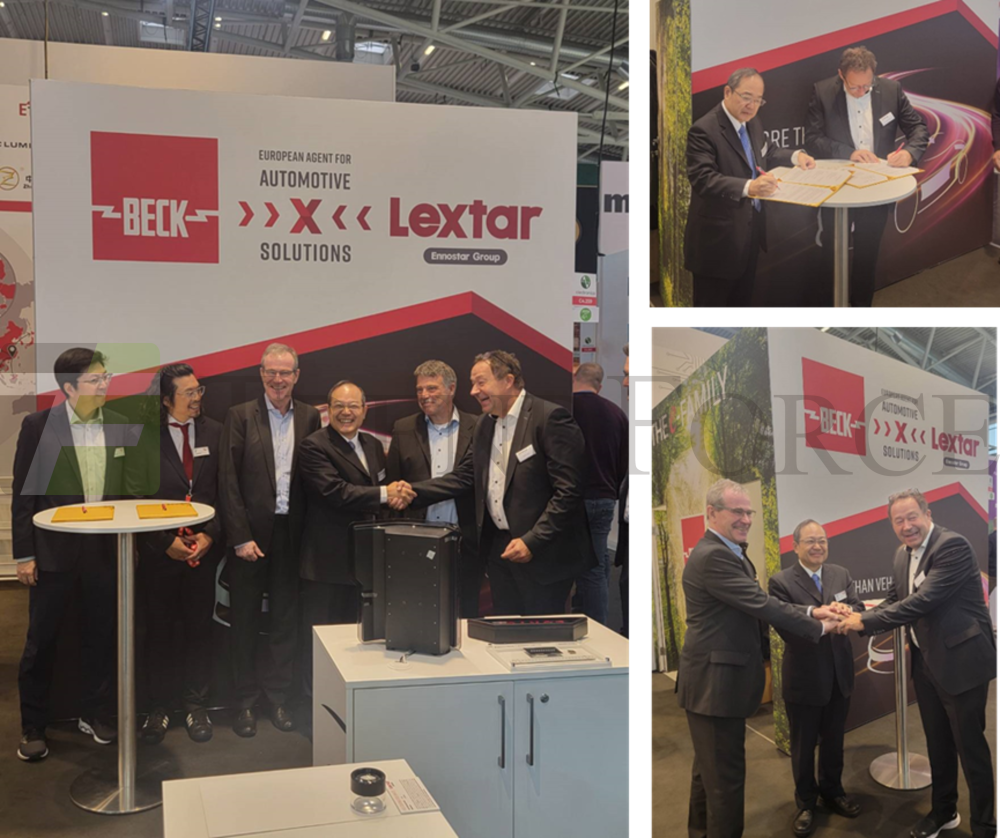
Everlight
Everlight mainly promotes the applications, such as headlights (Incl. DRLs and fog lights) and ambient lights. The headlight LED components are designed with the concept of being easy to pair with optical lenses. Currently, the development has been completed, and the marketing focus is on the ALFS H series (with single-chip LED brightness reaching 480lm @1,000mA) and the ALFS J/JS series (with single-chip LED brightness reaching 450lm @1,000mA). In addition to white light products, Everlight offers new dual-color LED packages for lights incorporating both DRL and turn signal functionalities. The products comprise flip chips with high optical power output, AlN substrates with high thermal conductivity, and anti-sulfur phosphor films. These components allow the package to maintain high color rendering and brightness output per unit area in high temperatures. For example, the 3735 LED has a luminous intensity of 60lm (Cold White) /45lm (PC Amber) at 0.5W. In response to the rise of intelligent ambient lighting, Everlight has rolled out the ISELED-certified 3534 RGB LED that has already been adopted by European car makers. Targeting the Mini LED / HDR automotive backlight market demand, the manufacturer has been active in promoting its 2016 / 2835 / 1515 LEDs. Moreover, it is planning to develop the 3030 / 1515 LEDs as well as the 1010 / 0808 CSP LEDs for the 2024-2028 car models.
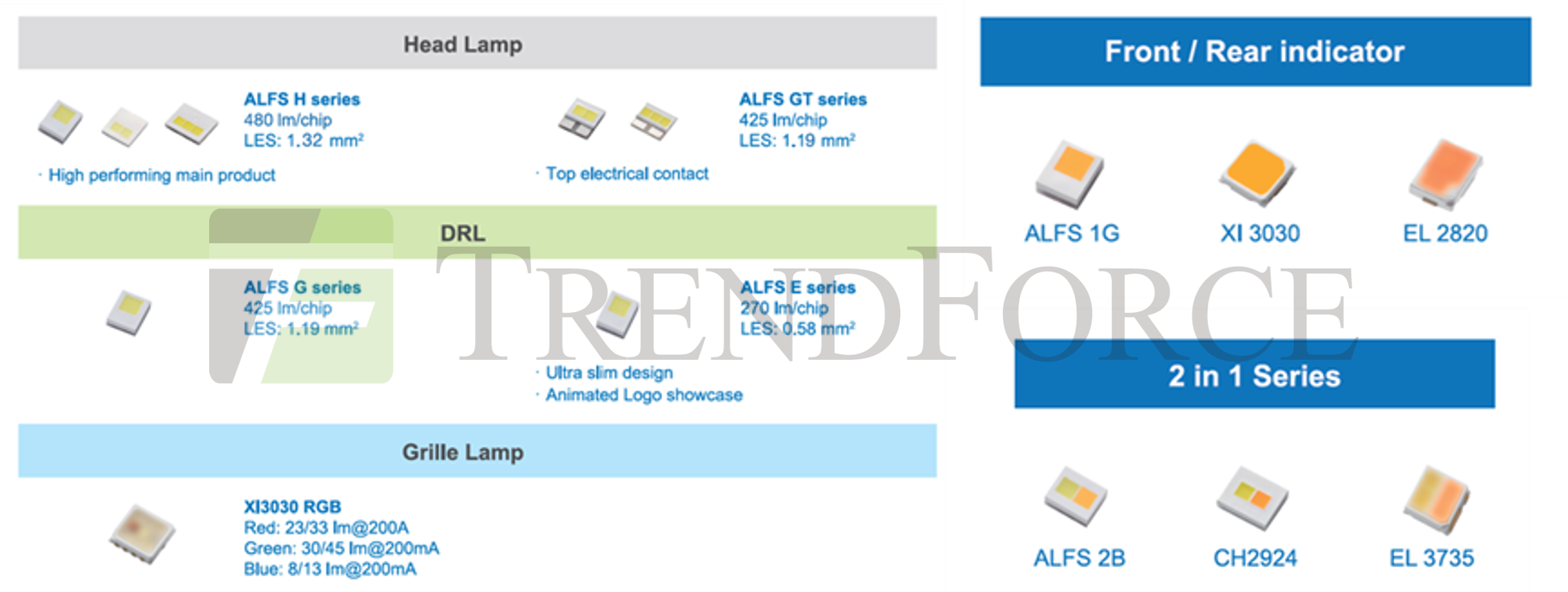
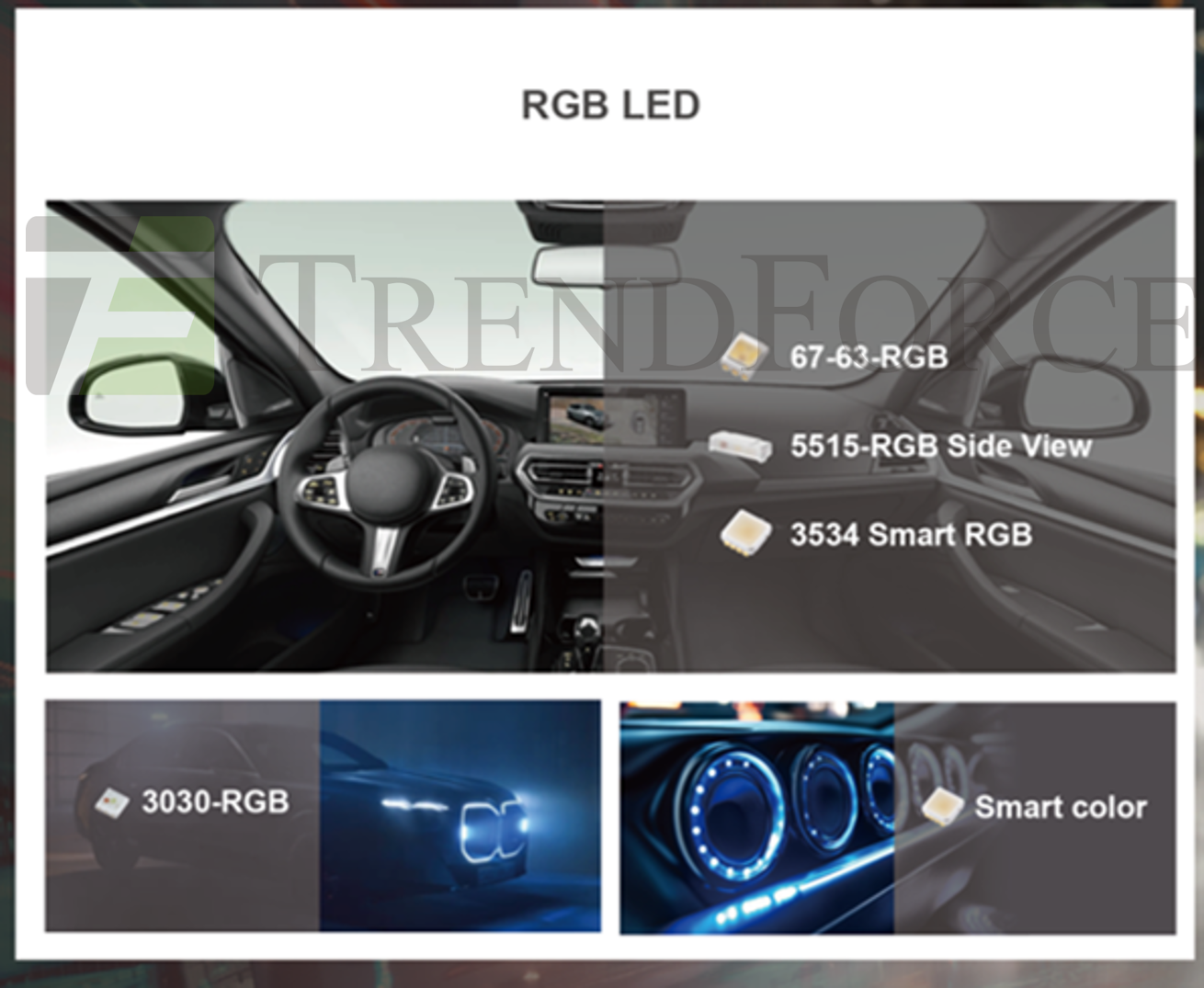
Brightek
At the electronica event held in Munich this year, Brightek showcased three major product lineups including the 1) smart iCLed and software-hardware integration solution, 2) smart surface modules for next-gen human-machine interfaces (HMIs), and 3) infrared sensing. “Europe has always been a key hub for automotive, security, and industrial automation design and manufacturing, said Brightek’s General Manager, CH Tzeng, “This year, we are using the world’s leading electronics event as a platform to launch our new solutions, underscoring our commitment to the European market and our ambition to expand.”
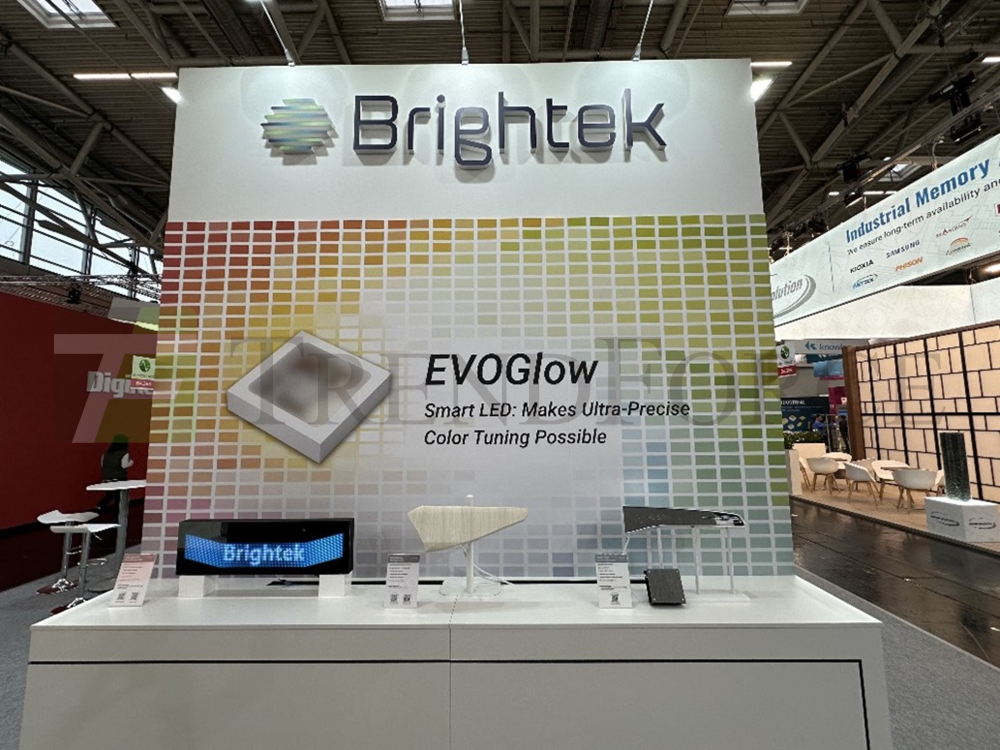
Brightek showcased its full-series smart RGB iCLed models that have obtained the automotive AEC-Q102 certification, including the latest EVO and ISELED lines. The EVO 3838 features 16-bit PWM color modulation, with color precision up to 16 million times that of traditional smart LEDs and a maximum brightness of 7,000 mcd, making it suitable for exterior automotive lighting. EVO is designed for high-brightness applications that require accurate color rendering, especially in ambient lighting and smart surfaces for HMI applications for better driving experiences. The ISELED 3233 boasting high brightness supports 8-bit PWM color modulation, four dimming levels, and complies with the ISELED standards for signal transmission. During the event, Brightek also presented the RGB iCLed hardware-software integration solution featuring its in-house UPP (Ultimate PWM Program), which aims to provide assistance for automakers with fast and precise color calibration. The UPP comes with a dimming speed by over five times and achieves a color accuracy rate of over 99%. Even when used on smart surfaces with varying materials, it allows for rapid and precise color calibration, thereby ensuring consistent color display.
Brightek presented a variety of iCLed modules for smart optoelectronic solutions in automotive interiors and exteriors. The smart surface solution offers a new generation of HMI design. Integrating touch functionality, the smart surface module achieves seamless design, significantly improving reliability and durability compared to conventional mechanical switches. The simplified design requires fewer materials, meeting customers’ demand for eco-friendliness and lightweight design. The company also demonstrated applications for exterior ambient lighting, including the miniaturized 1212 iCLed module, ideal for exterior matrix displays or interior smart surfaces providing additional information, making it a leading solution for next-gen interior and exterior ambient lighting.
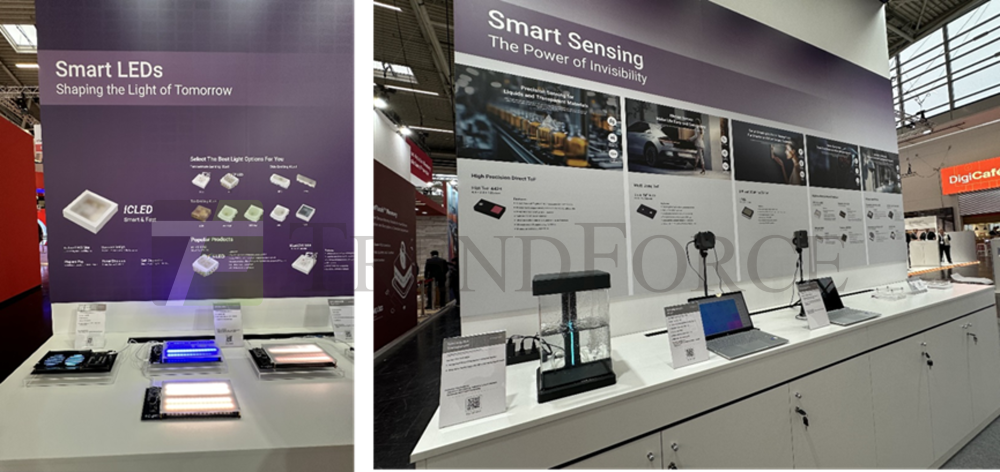
Harvatek
Harvatek has successfully transformed into a display module provider specializing in display module / LED and LED / VCSEL manufacturing. The company showcased a 135-inch P1.5625 FHD Mini LED display module COBsidian at electronica 2024. Named after the Obsidian, the COBsidian module demonstrated its capability to display an exceptionally black screen with a high contrast ratio on site. The module also excels in aspects such as seamless processing, tiling flatness, color consistency, and cost control. Notably, it was successfully sold during the event.

Its infrared sensing, such as proximity sensors, are equipped with the SWIR HCSEL, where the EEL emits the light through a metal reflector from the top side. Harvatek’s ambient light sensors have been applied to smart household lighting and solar tracking systems. The company also exhibited a face mask made of red LEDs and IR LEDs.
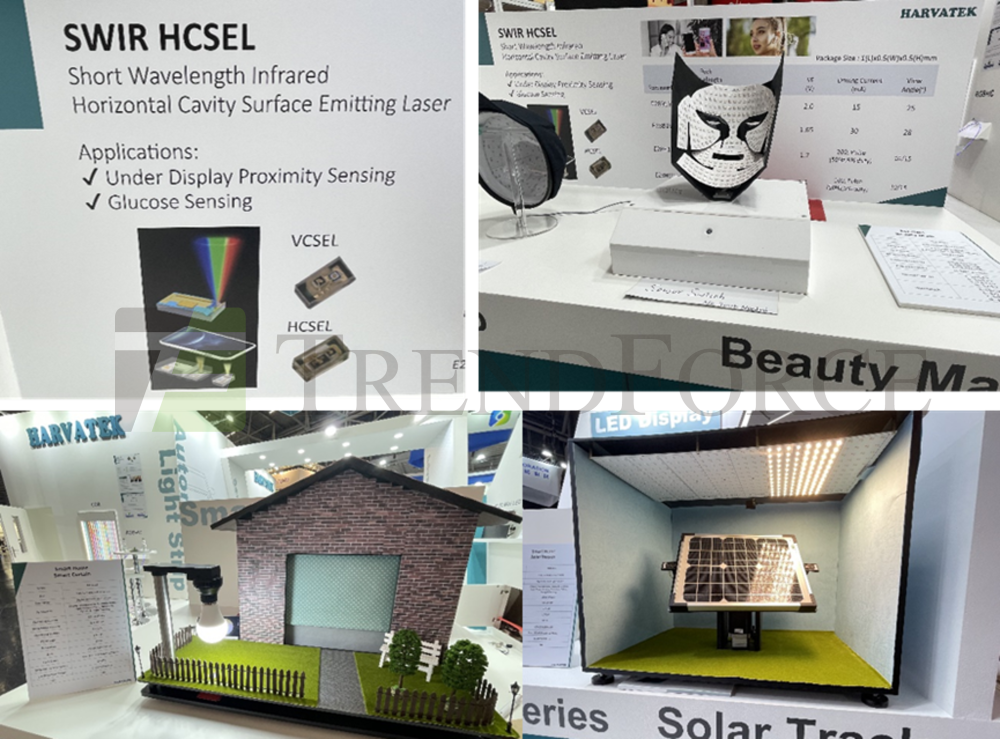
onsemi
The cameras for driver monitoring system mostly have a resolution of 1-2 megapixels. Specifically, onsemi has announced products featuring a resolution of 1.2 megapixels as an option for customers. An infrared sensing consumes 10% of the power required by a radar. Therefore, as TrendForce reported, car manufacturers continue to adopt infrared sensing despite their high unit prices, due to the ongoing issue of range anxiety.
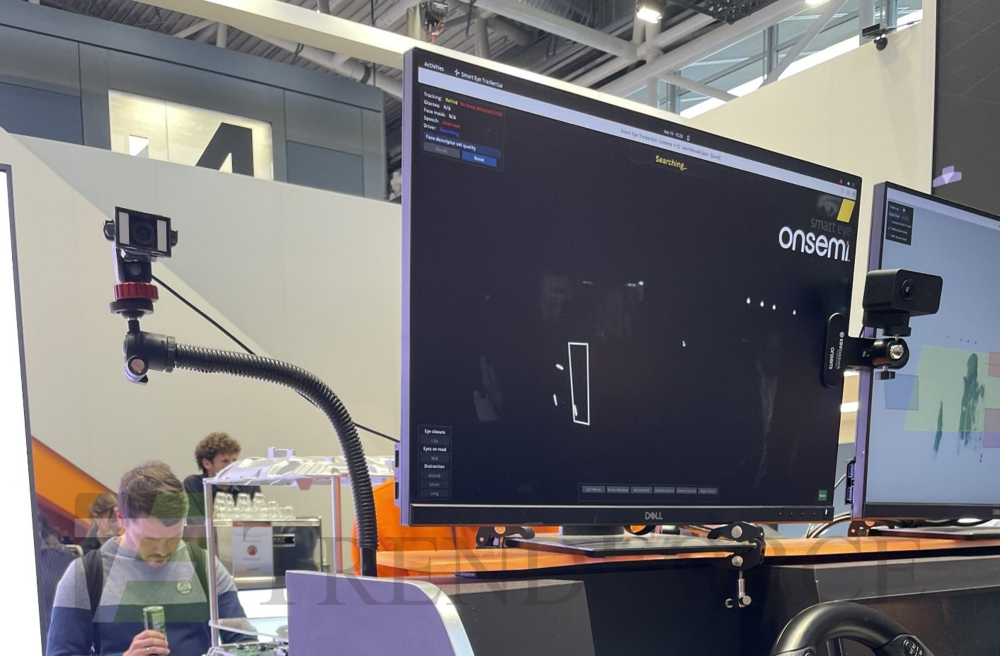
ASMPT
In response to the massive data processing demands brought by AI, the Internet of Things, and big data analytics, the bandwidth of networking technologies used in data centers is undergoing significant changes. As TrendForce reported, networks with bandwidths of 800Gbps and 1.6Tbps (1,600 Gbps) will become the primary drivers of market demand starting in 2025. Silicon photonics (SiPh) is combined with co-packaged optics (CPO) to integrate electronic integrated circuits (EIC) and photonic integrated circuits (PIC) on a single silicon wafer. This approach enables the silicon chip, originally capable of processing only electrical signals, to perform optoelectronic conversion and transmit and receive optical signals. The continuously advancing semiconductor manufacturing processes will help reduce the size and manufacturing cost of components and integrate previously discrete components, thereby enhancing transmission efficiency and product reliability. At electronica 2024, ASMPT showcased the AMICRA NANO, an ultra precision die & flip chip bonder that supports ±0.2µm @ 3σ placement accuracy. The product has been adopted by SiPh manufacturers.

With the application of Micro LED pixel array technology to ADB headlights, the number of pixels capable of independent, high-accuracy digital control has increased to 20,000-30,000 per headlight. As the number of these LED pixels increases, the headlights can adjust the illumination area more flexibly. This improvement enhances driving safety, meets varying legal requirements across different regions, and allows automotive lighting manufacturers to reduce development, production, and logistics costs for different markets. ASMPT has rolled out the AMICRA NOVA Pro to ensure the Micro LED pixel array meet the precision required for headlight applications, achieving an accuracy of up to ±1.0µm @ 3σ.
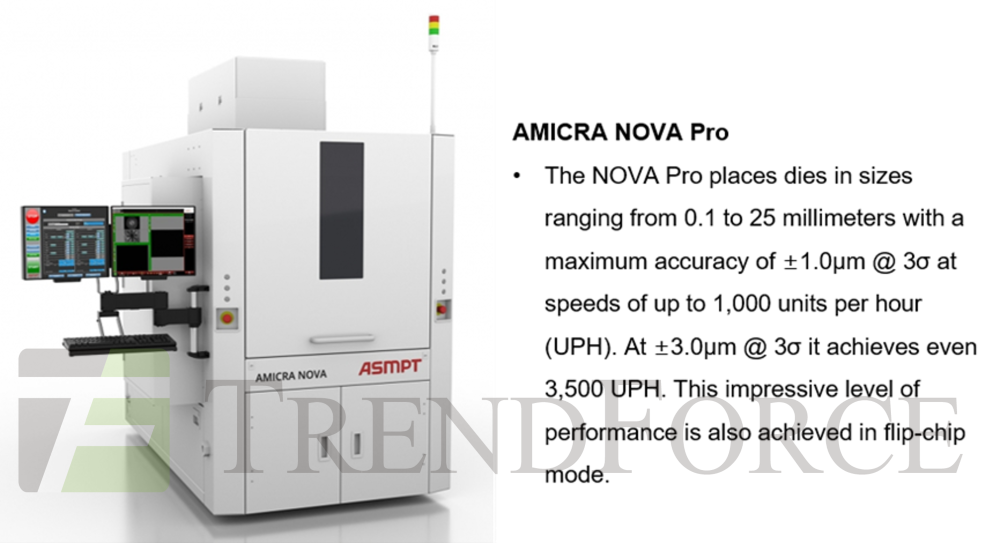
EV Group
LEDoS (Micro LED on CMOS) can be used in augmented reality to meet the needs of high brightness, miniaturization and low power consumption. Therefore, LEDoS is considered a key technical roadmap for augmented reality device players. In response to the requirements of augmented reality technology, EV Group launched wafer bonding and nanoimprint lithography equipment.
The waveguide passes through EV Group 12-inch Nanoimprint Lithography equipment HERCULES NIL, which can produce complex photonic gratings, to enable projection of digital images onto the real world. Dispelix's optical waveguide has a 300nm pattern structure on display at the exhibition.

Author: Joanne Wu, Senior Research Manager of TrendForce
TrendForce 2024 Global Automotive LED Market- Lighting and Display Product Trend
Release Date:
1. PDF (180 Pages)- 30 June 2024
2. EXCEL- 30 June 2024 and 31 December 2024
Languages: Traditional Chinese / English
TrendForce 2024 Infrared Sensing Application Market and Branding Strategies
Release: 01 January 2024
Format: PDF
Language: Traditional Chinese / English
Page: 172
|
If you would like to know more details , please contact:
|





 CN
TW
EN
CN
TW
EN






























